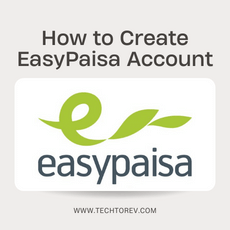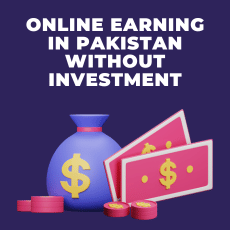How do you get customers to pay you? First, they have to see you.
You can do this with billboards but most people have ad blindness where they don’t even see the ads.
Worse yet, you can’t see how well or how bad your campaigns are doing.
The (better) digital equally fine practice is to use PPC (pay-per-click) to get people to come to you through online ads.
If done well, this is a great way to get specifically the right people to visit your website.
However, even if you use PPC correctly, you still run counter to digital ad blindness (ad blockers) that can remove your ads from sites.
On top of that, once you stop paying for ads, your source of traffic is turned off for that avenue of traffic.
This is how SEO enters into the conversation as a constant stream of traffic for your website that continues even without having to constantly pay for traffic.
You may have heard that by using SEO (search engine optimization), you can build compounding amounts of incoming traffic to your website.
While PPC is not always perfect for receiving constant organic traffic long-term, SEO can supplement your marketing strategy to get more people to visit your website consistently.
Was SEO Always This Confusing?
To be fair, SEO was much, much easier to follow in the years past.
Before updates such as Panda and Hummingbird, Google was just a search engine that allowed you to find the right website that you wanted at the right time.
However, what happened is that many websites (some sly, others greedy) would try to game Google SEO, making it harder for the average user to find what they want.
For example, many website owners used a once-common tactic called keyword stuffing used to game Google SEO.
This is when you would actively plug in as many keywords into your web pages to get more traffic through “organic search”.
The problem for the end-user is that they end up clicking on clickbait articles (at best). This has been such a longtime problem, even in November 2003, when Google unleashed its Florida update to combat this.
Because of the constant tug-of-war between content website owners and Google, SEO has evolved into something more complex.
Google has been called “somewhat secretive about discussing its algorithm”.
In part, Google understands many website owners would abuse the algorithm for a quick chance to funnel large amounts of traffic to their website unfairly.
SEO is more Expansive
SEO is also much more complicated today because it’s more expansive.
In 2000, it was easier to get traffic to your website through SEO because there was less competition and lesser standards employed by search engines.
From 2000 to the current day, we have seen the explosion of video and mobile as it reformats itself to meet expectations of how people use and consume technology.
When Google first started, its focus was to just direct you to the website that you want to go to right now.
Google is now a search engine for eCommerce products, nearby locations, and now YouTube videos.
In 2012, the primary rule for SEO is to create high-quality SEO content articles to boost your website’s rankings.
While using well-positioned SEO content articles to boost your ranking still works, Google has expanded itself as a search engine massively.
The Search Page on Google is no longer just an endless stream of website article content: there’s Video, Shopping Results, Tweets, Featured Snippets, and much more. Google as a search engine has expanded greatly.
While Google owns about 86% of the general search engine market in 2021, more search engines like Amazon SEO are playing an important role in SEO.
SEO isn’t always about ranking higher in Google SEO but it is about understanding what your particular search engine wants and how you can cater your content to what the search engine wants.
How Does This Affect Your Rankings?
Earlier, we mentioned that Google is a more expansive search engine than ever before.
But, how does this affect your website ranking?
In 2012, the popular but dominant go-to plan is to add backlinks to your website and create high-quality SEO-optimized content to get more visitors to your website.
Google currently has over 16 SERP Features that the end user can interact with on the Search Page.

Featured Snippet (pictured above) prefers that you write short and quick answers so your articles show up at the very top before your competition.

Related Questions (pictured above) show answers in-between the search results that will answer your questions directly – much like Featured Snippets.
This shows that Google is focused on semantic search: solving people’s questions directly with reliable answer(s).
Writing articles and blog posts that answer questions in a detailed, simple, easy-to-understand way is great for ranking higher for Featured Snippets.
However, just focusing on ranking for Featured Snippets is not going to be enough.
For example, if your website takes a long time to load, your website ranking will get outranked by other competitors on Google. As Google expands, the standards for boosting your website ranking are also raised higher.
How to Deploy Different Types of SEO to Boost Your Ranking
Even though Google has massively expanded as a search engine, the better news is that you don’t have to rank for every type of SEO.
While Google looks at Technical SEO standards more closely than it did back in 2000, the good news is that you don’t have to tackle every aspect of Google.
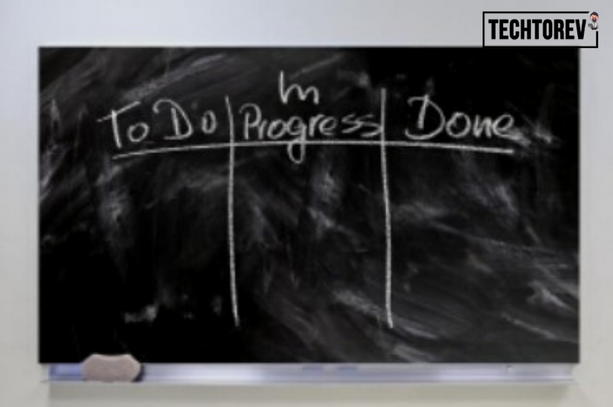
For example, if you’re promoting SEO for a mobile project management kanban board system software, you would focus more on ASO (App Store Optimization) versus Local SEO.
Yet, if you are a local repair shop, you can use Local SEO (with Google My Business) to drive customers to your shop.
This would mean that you would have to use keywords that reflect the service area directly in your content so when your customers search “repair shops near me”, you would show up in the search results.
Because of this, you have to think more contextually about which SEO you want to tackle.
Marketing and advertising take time so by using the right methods and the right SEO channels, you can outperform your competitors who may be using the wrong SEO channel to grow their website.
Google wants you to think contextually on how you address your website visitors: you want more website visitors and Google wants their end user to have a great user experience.
By the end of this article, you should be able to understand how Google operates and how to grow your traffic through Google that is specific to your situation.
This article is divided into four parts mostly: Internal SEO, External SEO, link-building, and Methods of SEO to help you understand how to best deploy Google SEO that works for you.
What are Internal SEO and External SEO?

To help you understand SEO much better, we’re introducing 2 concepts: Internal SEO and External SEO. Internal SEO is everything that you have control and influence over.
This includes:
- your On-Page SEO,
- your Off-Page SEO,
- and your Technical SEO.
External SEO includes everything outside of your sphere of control.
For example, Google is a general-use search engine that the average person uses to find answers for questions that they have.
Meanwhile, Amazon is a retail marketplace that prefers people to buy from the marketplace so their search engine would fit more like a shopping search engine that helps people find products that they will buy faster.
There is no way that your website can change the ultimate direction that Google and Amazon have as a search engine that serves millions of users.
Despite that, however, there is a way for you to compile data to understand what Google wants currently and its rewards.
By leveraging what each search engine wants through researching what these search engines want, you can effectively plan and do more successful SEO marketing campaigns for your website.
By combining both External SEO and your Internal SEO together, you can strategically boost your ranking in more calculated efforts and watch your traffic soar.
External SEO
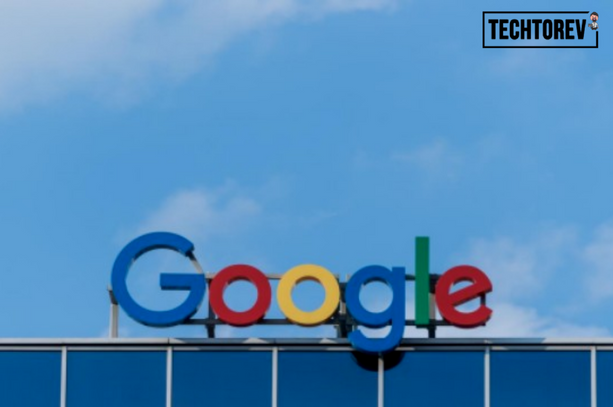
External SEO is practically any data that search engine uses to reward and rank your listing or website through their preferred priorities.
For example, Google wants your website to be as thorough and as relevant as possible.
This means that your focus should be on creating thorough and relevant content to help Google send traffic to your website.
There are even different facets of Google that prefer one factor over the other.
For example, to rank in Local SEO, you will have to focus on keywords that pertain to the local service area.
Also, in Local SEO, Google wants to know if you are a reliable local business that people can buy from directly so listing the needed details in Google My Business is also mandatory.
But, some queries in Google create different results pages.
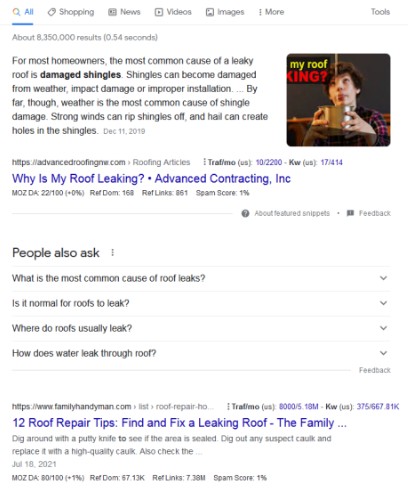
This is what you get when you type in long-string keywords into the Google Search Bar. You usually get authoritative articles.
However, most content is geared toward the person who is looking for more answers.
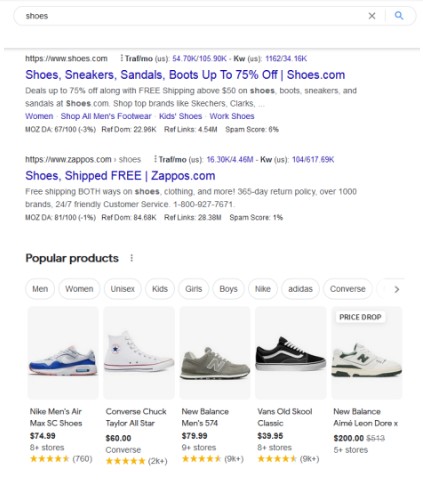
The above is when you are searching for “shoes”.
As you can see, the listing page is different is more apt for someone who is ready to buy right away.
The goal of the game is to understand (in-depth) what Google wants so you can position your SEM (search engine marketing) with better relevant content, natural or authoritative content.
You cannot control External SEO, you can understand what your selected search engine wants to generate content that sends traffic to your website.
While general marketing stats for different SEO can help guide you, it’s important to follow your data tracking efforts.
SEO as a Growth Channel
The best way to look at SEO is as a growth channel.
Growth channels are anything online on the Internet that can supercharge the desired effect on your website.
Growth channels are Internet trends that prefer specific things.
For example, if you are a local restaurant that ships delivered foods, you would use DoorDash as a growth channel to supply your source of revenue.
Google SEO is a growth channel that prefers high-quality, relevant content so its users find the information that they are looking for quickly.
High-quality, relevant content is one of the Top 10 Ranking Factors for Google in 2021, according to Grow Hack Scale.
This is why most websites still tend to prioritize SEO as a long-term way of getting traffic sent to their websites consistently.
As long as Google continues to send traffic to your website, you would continue to keep producing high-quality, authoritative articles for your readers to enjoy.
SEO is an Established Growth Channel
There are 4 different phases of growth channels.
- Emerging: these channels are new and novel. If you build a simple concept on these growth channels, then when the growth channel takes off, so will your product. A great example of this would be Axie Infinity (product) being early on the Web3 Gaming growth channel.
- Established: these are growth channels that have established rules for how to operate already. Most people (even in the mainstream) know how to make money on these growth channels. Amazon is a great example of an Established growth channel. The best thing you can be in an established growth channel is to follow the established rules of a growth channel and somehow offer something different outside of your competition.
- Saturated: these are growth channels that are over-saturated with low-quality products that are somewhat of value. A classic example of this would be the video game crash of 1983 and how the Nintendo Seal of Quality helped purchasers find games that are worth playing. In these growth channels, you want to be a qualifier.
- Decline: these are growth channels are dying. Every growth channel dies: everyone. The best example of declining growth channels is the American Saturday morning time slot being taken over by Litton Entertainment or a modern example of YouTube ranking Established Creators moreover new content creators. In this growth channel, you want to collateralize as this is the winning strategy in a vulture-takes-all-of-market.
Because Google acts as an Established Growth Channel, meaning people still actively use Google every day and it’s a part of active daily life, your best focus is to give the growth channel what it wants.
Since Google SEO prefers high-quality content, the best thing you can do is:
- research information through your competitors’ content articles with keyword research.
- and sentiment research
This way, you can combine these data points along with the infamous Skyscraper Technique to position the most-asked-for questions so you rank higher.
By working with Google SEO as a growth channel, you can still use the search algorithms (as well as understand what people want and how they use Google SEO) to find the information that they are looking for.
Also, Google uses different search queries and different content formats to display similar types of results.
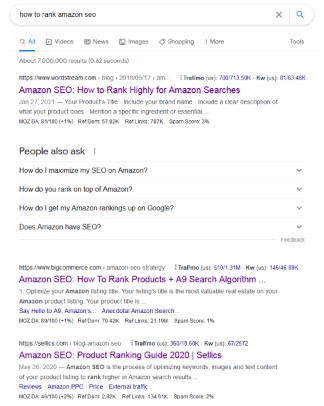
For the content formats such as “Guides” and “How-to”, Google will display article texts in the search results.
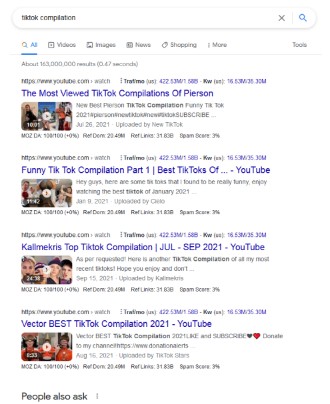
For others, Google will use different content formats. This is important so you know what type of content you want to use when it comes to writing for Google.
4 Types of SEO and How to Use Them to Boost Your Ranking
It can be easy to look at Google SEO as a giant buffet dinner where you have to use all that Google has to offer.
While it is now necessary to have a well-rounded SEO strategy to rank ahead of your competitors, you also want to select the right SEO (growth channels).
Not every SEO growth channel would benefit your firm.
As we said earlier, a local repair shop wouldn’t benefit very much from using eCommerce SEO for a variety of reasons:
- #1: A local repair shop would have to explain potential problems that they are facing and potential fixes while eCommerce SEO is geared to getting people to buy at the right moment, at the right price.
- #2: eCommerce business models tend to be set-in-stone ($15 for shoes) versus a local repair shop that has to do quotes and get people’s numbers before doing a quote.
- #3: eCommerce businesses have a greater width than a local repair shop where they have to focus on marketing to their local area.
Understanding how your firm works will help you focus on which SEO methods to drive relevant traffic to your website.
Local SEO:
Local SEO is where you market your firm to the surrounding area.
This is best for customers who need people who are within the local service area to purchase from the firm.
This is usually perfect for home and commercial repair businesses as they can write authoritative articles and use specific keywords such as “Chicago” or “Milwaukee” to draw in local website visitors through queries such as “local to me” or “near me”.
Local SEO is a large growth channel for local (service) businesses with about 46% of total Google searches looking for local information, according to Go Gulf.
On top of that, 76% of people who search for local information on their smartphone will visit a local business within the next day, according to Think with Google.
This means that a local service business can create in-depth content and more easily outcompete their local competitors and get more local website visitors to their website.
For example, a roofing company can create an in-depth article around protecting the roofing structure against the Milwaukee snow and rank well for nearby roof or local queries from creating content around protecting your roof from snow in Milwaukee.
The goal of the game with Local SEO is that you want to make it very easy for nearby customers to find you on Google quickly.
eCommerce SEO:
If you are starting an eCommerce store or marketplace, you would want to start growing your eCommerce marketplace by strictly focusing on eCommerce SEO.
With that said, there are several more things to focus on than you would with Local SEO.
While having healthy site architecture is a must for any website, it’s crucial for your eCommerce site.
A site architecture (a sitemap for the layman) is how your average user navigates your website.
Because eCommerce sites or marketplaces are selling tens, hundreds, or even thousands of products, they have to make sure that people can easily browse their marketplace.
For example, you want a link system that works like this:
example.com/shoes/product
Instead of this:
example.com/navigation/shoes/sandals/product
As your eCommerce page links get deeper, they begin to lose authority.
Keeping a simplified site architecture allows the end-user to find your product on the website more quickly.
This also helps you use more “authoritative” pages because your sitemap is more neatly organized.
Another thing to understand about eCommerce is that people are looking to buy.
Instead of using problem-focused content where you describe the problem, you want to focus on using product-focused content (i.e. product descriptions) to tell people about the product.
You want to use phrases such as:
- Overnight Shipping
- “%” off
- Free Shipping
As the game with eCommerce SEO is to rank your products high so your customers who are searching for them will buy them right away.
ASO (App Store Optimization)
What if you are not setting up an eCommerce store or a local repair shop but an application instead?
The type of SEO to focus on is ASO (app store optimization).
ASO and SEO share familiar marketing parts.
In SEO, the focus is to get visitors to your site whereas, in ASO, you want as many downloads as possible.
The On-Page SEO for a headline in SEO is the Title Tag versus ASO where the focus is on App Name (Title).
Your sales page is your App Page on the App Store.
You want to use quick videos that showcase:
- the benefits of using your app
- how your app works and functions
- and of course, the call-to-action to get people to download the app.
You also want your app to have higher ratings on your app so your app can be featured higher on the Search Page.
By using the right keywords and colorful icons that grab your visitor’s attention and compiling your app visuals into a beautiful landscape that both excites and informs your end-user, you can raise the Total # of Downloads for your app.
The goal for ASO is to get more downloads and higher ratings so your app can continue to be featured higher within the search ranking.
Small Recap
The reason why External SEO is so important is that understanding the rules of different growth channels can allow you to hyper-prioritize which growth channel to work on.
Another thing to consider: time.
You don’t have all the time in the world.
For example, if you are a local repair shop then creating an app wouldn’t be the best use for driving local customers to your window installer shop.
The same is true for a mobile app that cannot scale beyond 10,000 users outside of a local service area.
Would it be beneficial for a local repair shop to have a mobile app for their business? It would be beneficial.
Yet, most people don’t go to the app store to solve a plumbing problem in their house: they instead go to download App Stores to download apps.
Understanding how different SEO growth channels work will help you focus on which SEO growth channels to hyper-focus on so you can grow faster.
Internal SEO: On-Page-SEO; Off-Page SEO; Technical SEO

What is Internal SEO?
Now that we finished talking about External SEO, we can now talk about Internal SEO.
Internal SEO refers to anything that you have control and influence over: i.e. your website, your ranking, your traffic.
To keep things simple, Internal SEO includes:
- On-Page SEO (anything that happens on your website on the front-end: what people can see directly),
- your Off-Page SEO (anything that directly impacts your site but outside of it: traffic from backlinks; reputable sources; your EAT score, and reviews)
- and Technical SEO (the “back-end of your website: structured data; site speed optimization; hreflang.)
Including all three factors builds a stronger, defensible, well-rounded SEO/SEM implementation.
On-Page SEO
On-Page SEO refers to building highly relevant pages that are easily linked to and relevant to visitors.
This means that you want to include backlinks in your pages.
Also, if you want to increase the Pages per Session metric, you want to include internal links in your article so you can boost your ranking.
It also helps to have compressed images that are easily indexable by search engines. ∙ Good Example:
∙ Spider.jpg
∙ Bad Example
∙ 53yt743h43hu.png
This helps with indexing your website through Image Search and receiving organic traffic from it, too.
62% of Millennials and Gen Z want visual search as a feature, according to ViSense.
Thus, it’s only a matter of time before Google prioritizes Image Search so it’ll be best to get ahead of Google.
The goal of the game is to create pages on your website that are highly indexable so you can drive higher amounts of traffic to your website.
There are more helpful On-Page SEO sources here – if you are interested in more info on On-Page SEO:
Off-Page SEO
Off-Page SEO is the flipside of On-Page SEO.
With On-Page SEO, your focus is to drive your traffic through your content but with Off-Page SEO, your focus is to use external sources to drive traffic to your website.
This means creating social content to drive backlinks to your website.
This means having natural links given to your website so your content rates are higher.
Google wants to promote more established websites with a track record of relevant content in the algorithm.
This means that you have to create backlinks from higher authority sites so you can drive traffic back to your website.
While backlinks are excessively important as a metric to keep track throughout campaigns, it’s important to understand that building backlinks is also a byproduct of building a healthy brand.
Google knows that there are link networks made to give smaller websites gain but it prefers that your site link with higher, authoritative sites so your website is found by more visitors.
This is so important because even if you have better authoritative content than your competitor, if you don’t have a higher ranking, they will still rank over you.
The main focus here should be building a stronger brand outside of your business so that Google sees that your website is not going to disappear overnight.
Technical SEO
Technical SEO refers to everything technical around SEO outside of content (On-Page SEO) and building a brand (Off-Page SEO).
These include factors such as site speed optimization, hreflang; flat site architecture, etc.
The focus here for Technical SEO is to help your website index faster through search engines.
Earlier, we discussed how an eCommerce site must have a flat site architecture so that ordering a product is always 3-4 pages away.
Outside of the eCommerce site example, you want a flat site architecture so that your site is easier to index in search engines and you can be found faster.
If having high-res images is important for your content, you must understand that your site speeds slow down because those uncompressed images take longer for your site to load.
Backlinko mentions this as a dilemma that they face because they rather sacrifice faster site loading speed for the sake of having high-res, uncompressed images with large, designed content pages.
Technical SEO is not a part of SEO that can be ignored but dedicating time to Technical SEO allows you to ensure that your content will outrank competitors because you took the time to build a strong technical foundation for your site.
Technical SEO is just a tool that you can use to create a better experience for the end-user.
How It All Comes Together.
Building a healthy site that is accessible is only half of the battle if you only focus on Internal SEO.
The other half is to also pay attention to what the search engines are looking for.
As we discussed before, different search engines value different factors:
- Local SEO favors local (service) businesses more.
- eCommerce SEO favors Google searchers who are ready to buy right away.
- ASO favors high-favored apps with high-converting, attractive visuals.
Building and implementing a defensible trifecta SEO strategy plan through Internal SEO allows you to tackle whichever SEO growth channel that you can grow your business faster on.
This way, you can grow faster than your competitors in less time while using as few resources as possible.


